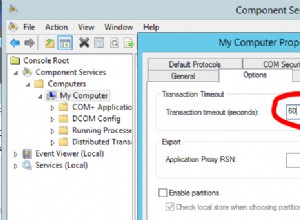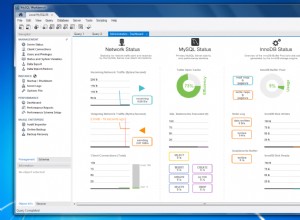Un curseur est un pointeur utilisé pour extraire des lignes d'un ensemble de résultats.
Ainsi, lorsque vous faites table(test_pipe(main_cur)) , vous ne transmettez pas de rowsource à la fonction pipeline . vous devez d'abord récupérer les lignes, puis passer le rowsource.
Cas de test :
SQL> CREATE or replace TYPE target_table_row
2 AS
3 OBJECT
4 ( EMPNO NUMBER(4) ,
5 ENAME VARCHAR2(10)
6 )
7 /
Type created.
SQL>
SQL> sho err
No errors.
SQL>
SQL> CREATE or replace TYPE target_table_rows
2 AS
3 TABLE OF target_table_row;
4 /
Type created.
SQL>
SQL> sho err
No errors.
SQL>
Fonction de pipeline
SQL> CREATE OR REPLACE FUNCTION pipelined_fx(
2 p_cursor IN SYS_REFCURSOR)
3 RETURN target_table_rows PIPELINED PARALLEL_ENABLE(
4 PARTITION p_cursor BY ANY)
5 IS
6 TYPE cursor_ntt
7 IS
8 TABLE OF emp%ROWTYPE;
9 nt_src_data cursor_ntt;
10 BEGIN
11 LOOP
12 FETCH p_cursor BULK COLLECT INTO nt_src_data LIMIT 100;
13 FOR i IN 1 .. nt_src_data.COUNT
14 LOOP
15 PIPE ROW (target_table_row( nt_src_data(i).empno, nt_src_data(i).ename ));
16 END LOOP;
17 EXIT
18 WHEN p_cursor%NOTFOUND;
19 END LOOP;
20 CLOSE p_cursor;
21 RETURN;
22 END pipelined_fx;
23 /
Function created.
SQL>
SQL> show errors
No errors.
SQL>
Maintenant, testons la fonction en pipeline :
SQL> DECLARE
2 rc SYS_REFCURSOR;
3 num NUMBER;
4 BEGIN
5 OPEN RC FOR SELECT * FROM emp;
6 SELECT count(*) INTO num FROM TABLE(pipelined_fx(rc));
7 DBMS_OUTPUT.PUT_LINE( num || ' rows in total.' );
8 END;
9 /
14 rows in total.
PL/SQL procedure successfully completed.
SQL>




